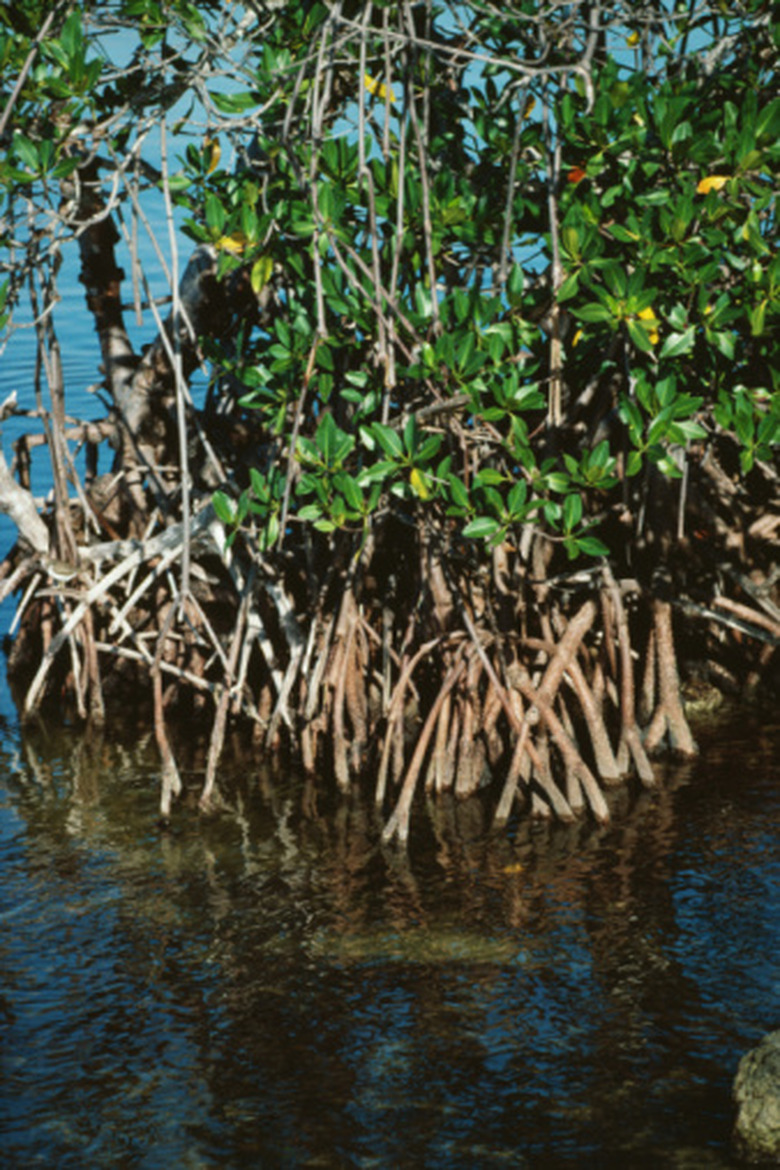The Life Cycle Of A Mangrove Tree
Mangrove trees grow in and near bodies of saltwater in areas where other species of trees cannot survive. Mangrove trees are able to absorb much higher levels of salt than typical trees. Many species of mangrove tree produce small plants known as propagules rather than seeds, which makes the mangrove life cycle different from that of other types of trees.
Adults
Adult mangrove trees usually grow in large groups, called mangrove forests. Mangrove forests are most common along sheltered beaches with muddy shorelines.
Flowers
Adult mangrove trees produce small, yellow flowers in the late winter and early spring, usually from February to April. These flowers do not generate seeds the way most flowers produce young. Instead, mangrove flowers produce young mangrove trees, called propagules.
Propagules
The propagules remain on the mangrove tree itself as they grow. This growth stage can last for up to 12 months. The propagules fall from the tree in the wintertime, usually in the month of December. As they fall, they are carried great distances by the wind. Since mangrove forests grow near the ocean, many of the propagules land in the water. Propagules can survive for a long time in the water, up to 24 months. One end of the propagule absorbs water, while the other repels it.
Ground Growth
If the propagules land in a conducive climate, such as the muddy waters of an isolated beach, they begin to plant roots in the ground and grow more leaves. As they grow into adult mangrove trees, they start to produce propagules, and the cycle continues.
